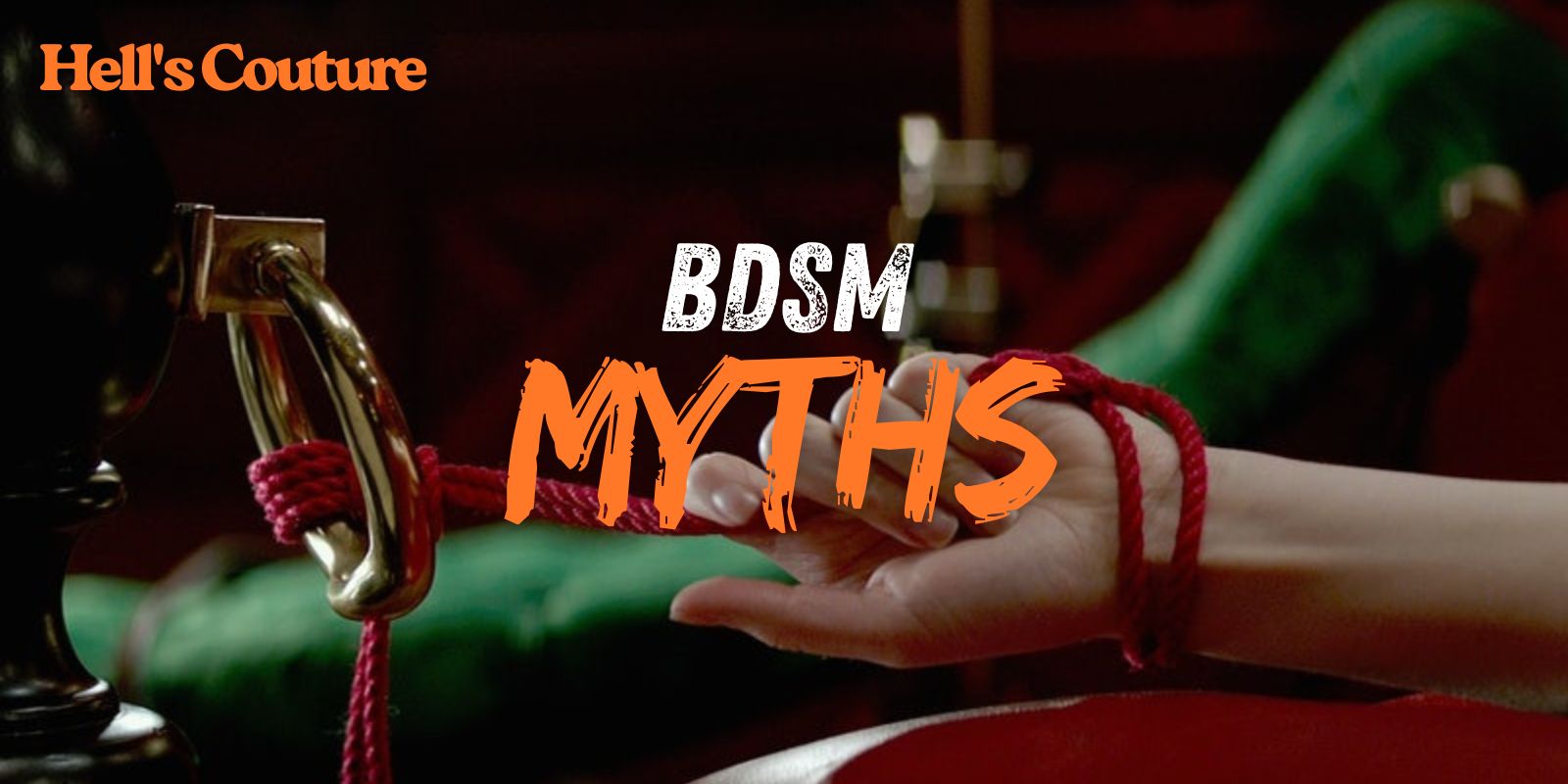Demystifying Common BDSM Myths
BDSM, short for bondage-discipline, dominance-submission, and sadism-masochism, is increasingly gaining global recognition. Yet, many people still hold onto outdated beliefs and stereotypes. This guide aims to debunk the most common BDSM myths and replace them with facts rooted in research, psychology, and lived experiences. By doing so, we can better understand how BDSM is not just safe but also consensual, empowering, and fulfilling for many couples.
Table of Contents – BDSM Myths
- BDSM Is Merely About Sex
- Only Abnormal People Love BDSM
- BDSM Is a Sign of Trauma
- You Are Either a Dominant or a Submissive
- FAQs on BDSM Myths
- BDSM Beyond the Myths: Your Path to Pleasure
Common myths about BDSM suggest it is abusive, rooted in trauma, or that submissives lack control—but research and real-life practices prove otherwise. BDSM is not about harm; it is about consensual power exchange built on trust, negotiation, and clearly defined boundaries. Safe words and open communication ensure that all participants remain comfortable and respected throughout the experience. Far from being a sign of mental illness, studies show that BDSM practitioners are generally as psychologically healthy—and often more communicative—than the general population. While some forms of BDSM involve sexual play, many practices focus on intimacy, trust, and role play, making BDSM a safe, consensual, and deeply rewarding way for partners to explore connection and desire.

Myth 1: BDSM Is Merely About Sex – BDSM Myths
One of the biggest misconceptions is that BDSM is solely about sex. While sexual encounters often occur, BDSM encompasses much more. It can involve psychological dynamics, power exchange, and deep emotional connection. For many, BDSM offers more than just sexual pleasure. It can build trust, intimacy, and even community, such as in the LGBTQI community. In fact, some forms of BDSM don’t involve sexual contact at all, proving that it’s about experience and connection, not just sex.
BDSM can be a lifestyle, an art form, or even a therapeutic outlet. Role play, restraint, and sensation play often focus on control, vulnerability, and emotional intensity rather than intercourse itself. By broadening the definition beyond the bedroom, it’s clear that BDSM is as much about self-expression and relationship building as it is about erotic pleasure.
Myth 2: Only Abnormal People Love BDSM
Another harmful stereotype is that people who enjoy BDSM are abnormal. In reality, BDSM desires are part of normal human diversity. There is no mental illness that “causes” BDSM interests, and psychologists confirm it isn’t linked to negative life experiences. Simply put, people have diverse sexual needs, and BDSM is just one of many ways individuals express and explore desire.
Research consistently shows that BDSM practitioners are psychologically similar to the general population—often reporting equal or higher levels of life satisfaction, relationship quality, and mental health. Far from being abnormal, BDSM enthusiasts are everyday people—partners, parents, professionals—who choose to embrace consensual erotic play. Removing the stigma helps normalize these desires and empowers individuals to explore them openly and safely.
Myth 3: BDSM Is a Sign of Trauma
A persistent myth claims that BDSM stems from trauma or abuse. While trauma can influence some individuals’ preferences, research shows that most BDSM practitioners enjoy it because of personality, curiosity, or desire—not trauma. In fact, studies suggest BDSM can actually help people process trauma by allowing them to reclaim power and control in a safe, consensual space.
Another important point is that equating BDSM with trauma invalidates the healthy, joyful experiences of countless people who practice it. Just like any other form of intimacy, BDSM is about choice, trust, and connection. Many participants find it enhances their relationships, builds confidence, and allows them to explore new sides of themselves. Reducing it only to trauma overlooks the richness and positivity it brings to people’s lives.
Sometimes BDSM Works as Healing
Therapists note that BDSM can help individuals regain agency, face difficult experiences, and heal. When practiced safely and consensually, BDSM becomes not a symptom of trauma, but a pathway to recovery and empowerment.
Myth 4: You Are Either a Dominant or a Submissive
Many assume BDSM roles are rigid—you’re either dominant or submissive. The truth is more flexible. Roles can shift, and people often identify as “switches,” enjoying both dominance and submission depending on the scenario. Far from being humiliating, these dynamics are rooted in affection, consent, and trust, designed to deepen intimacy rather than demean.
Many people explore different roles at various points in their journey, discovering new preferences as they grow more comfortable with themselves and their partners. Rather than being a fixed identity, dominance and submission are fluid expressions of desire that adapt to mood, context, and connection. This flexibility allows individuals to experience a richer, more dynamic spectrum of pleasure and intimacy.
FAQs on BDSM Myths
Is BDSM dangerous?
No, when practiced with communication, consent, and safety measures, BDSM is safe and often beneficial for mental and emotional well-being.
Do you need to have trauma to enjoy BDSM?
Absolutely not. Most people who practice BDSM do so because of curiosity, desire, or personality—not trauma.
Is BDSM only for “kinky” people?
No. Even light practices like blindfolds or handcuffs fall under BDSM. Many couples already enjoy BDSM elements without labeling it as such.
BDSM Beyond the Myths: Your Path to Pleasure
BDSM is no longer confined to taboos or stereotypes—it’s increasingly recognized as a consensual, safe, and fulfilling practice. By demystifying these common myths, you can approach BDSM with clarity, confidence, and curiosity. Whether you’re experimenting with light bondage or exploring deeper power dynamics, remember: BDSM is built on trust, consent, and pleasure. When embraced responsibly, it becomes a pathway not just to desire, but to intimacy, growth, and empowerment.




You must be logged in to post a comment.